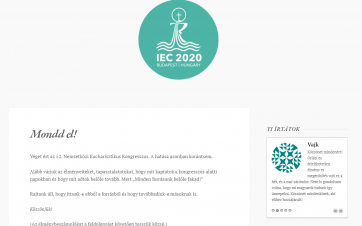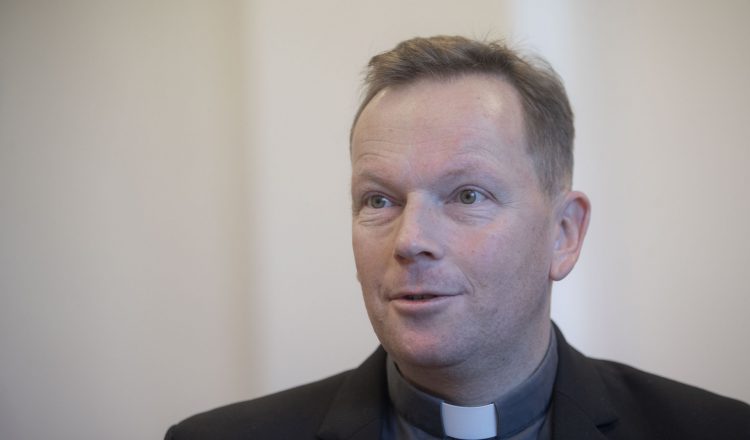
Kornél Fábry: “If I know that I’m not alone with my faith, it strengthens me”

Kornél Fábry, Secretary General of the Congress, we conversed about the origins, plans and goals of this event, which will move hundreds of thousands of believers and pilgrims. We also discussed with Fr. Kornél Fábry, who is also active in the social media the relationship of the Protestant Churches in connection to the celebration and also how they reach out to those, who do not go to church.
The International Eucharistic Congress is the greatest event in the life of the whole Catholic Church. Lay people do not understand what the words ‘eucharistic’ and ‘congress’ are. So, what is it all about?
When I hold a lecture, I also usually begin with this. So, let’s go through it! The word ‘Eucharist’ is Greek and means thanksgiving, but also the Holy Mass and the Sacrament of the Altar, so as we believe, Jesus Christ is really present in the Eucharist. That is why we cannot translate it in one word. And the word ‘congress’ should be understood in it’s original meaning, which is: gathering. This does not mean when three hundred people are listening to lecturers, but rather when we congregate in great numbers. If I had to translate, what kind of event this will be, I should say, it’s not a World Youth Day, but a World Eucharistic Day. During this we will host significant events. It will be a spiritual retreat of some sorts, which is the congress-part itself, and there will be holy masses on a grand scale, a eucharistic procession with torches, concerts and lectures.
Jesus is in the centre.
From the Church’s point of view it is stepping outside its own walls to bear witness to Jesus, since He is the one, who can give us everlasting life.
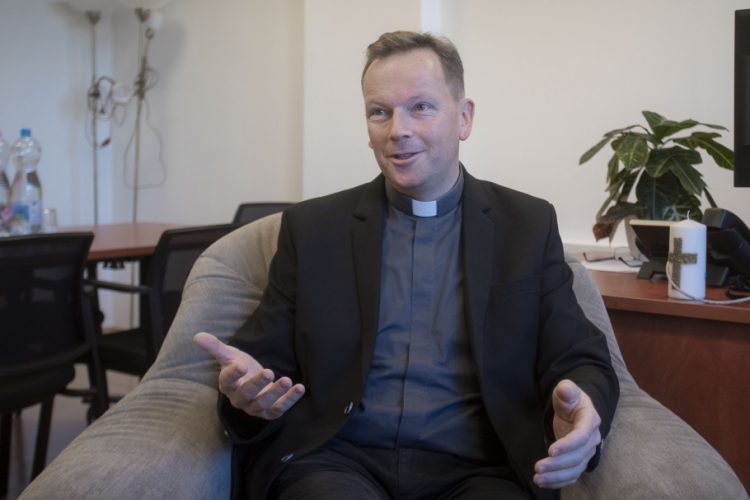
Where does this worldwide meeting come from?
The story started in 1874, when a French damsel, Émilie Tamisier saw that the Church has a message even in a very secular France. That’s why she organised a pilgrimage in the spirituality of the Eucharist. She did this year after year, and more and more people always joined in, and in the end, we were speaking about fifty thousand pilgrims. This drew the attention of the French Bishops’ Conference and they said, we should add to the end of this pilgrimage a congress of sorts, a series of catechesis, a teaching on the Eucharist, because it is about a mystery of faith. We also say this in the mass: “The mystery of faith!” So, we can accept only by faith, that Jesus is really present in the bread and wine. Later the news about the Congress became widespread, left France and other congresses were held in many other places. Finally, in 1893 in Jerusalem a Congress was held, where the Pope sent a legate, and in 1905, Pope Pius X was the host of the Congress in Rome. At first a congress was organised every year, but sometimes history intervened, and today the system is that one is held every fourth year. It is also a custom that the host city is always on a different continent, similarly to the world youth day. It is easy to remember, when the International Eucharistic Congresses are held: the same year when the Olympics and the European Football Championships are also held. This was the case in 2008 in Quebec, in 2012 in Dublin, in 2016 in Cebu City in the Philippines, and in 2020 Budapest will be the host.
“Ask and you shall receive!”
How was the Hungarian capital chosen?
Last Pentecost Cardinal Péter Erdő has said that the Gospel came true: “ask and you shall receive!” Obviously, it was spoken, that the next congress will be held in Europe. In Middle-Europe earlier there was a congress in Wrocław and the Cardinal said that we would gladly host it.
There was an International Eucharistic Congress in Budapest before, in 1938, which gave a great spiritual renewal for the country. Back then the legate of the Holy See was Cardinal Eugenio Pacelli, who later became Pope Pius XII. This time who can be expected as a high-ranking envoy from the Vatican?
For this we don’t have the answer yet. The Holy Father himself did not respond, if he could come personally. But whether or not he comes, he will appoint a legate. It is customary that the cardinal legate is from the given region and culture, but at this moment we don’t know.
So, there is a possibility, that Pope Francis himself will attend the congress?
He did not give an answer yet, so he did not say yes or no. And please remember that his visit to Csíksomlyó was made public only a couple of months before the event.
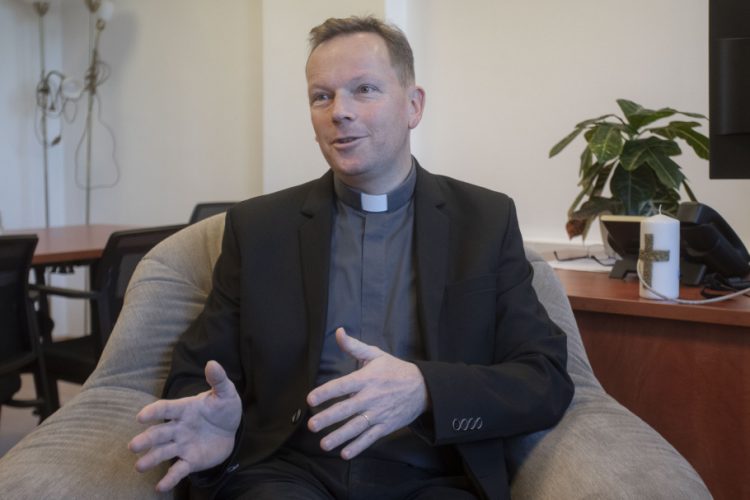
Last week the Christian Churches prayed for the unity of Christians. However, the International Eucharistic Congress is a specifically Catholic event. How have the Protestant Churches reacted to Hungary being the host of this event?
According to my experiences so far, I can say that they took it very well. For example, our Lutheran brothers have announced the year of the Communion - thus joining in with the Congress. We also are open to the Christian denominations. The best example for this is that all the preparatory congresses organised had an ecumenical part. Last year there was a eucharistic scientific conference in Esztergom, where two rabbis lectured on the relationship between the Eucharist and the Passover Seder, and also about the blessings at home. The representatives of three Orthodox Churches were also present and introduced us to their own area and Lutheran and Calvinist bishops also held speeches. We experienced that the Eucharist rather binds us, than divides us. It was interesting to hear what others think about the Communion and the Eucharist. We saw the same openness from their side, so a dialogue has begun. I see in many places that smaller conferences are being organised, also in ecumenical circles. So, the way I see it, the Protestant denominations also took it with joy, and they will join in in their own way.
How do the Lutherans and the Calvinists relate to the Eucharist, which is Christ for the Catholics, but not in their practice?
Well, maybe they could give a better answer on this, but the point is this: our Lutheran brothers confess that in the moment of taking the Communion they take it as the body and blood of Christ. In the case of our Calvinist brothers we can speak about a remembrance, as a memory of the Last Supper they take the bread and wine with great respect, so there is no transubstantiation. What do they think about the Catholic Eucharist? It is interesting because in the case of young pastors, I have seen that more and more of them think, that they have the Eucharist, too, but this really differs.
Faith and Culture
What kind of programmes will take place during the conference and where can the public find information about them?
We have an official website: www.iec2020.hu. We inherited the name from the abbreviation of the English name. The whole programme can be found there along with most of the lecturers and performers. Let’s run through it chronologically! From 10-12 September there will be a theological symposium in the St. Adalbert Centre in Esztergom. This is a scientific conference with a couple of hundred of participants. After this, in the afternoon of 13th September at 3:00 pm the opening ceremony will start with a festive holy mass in the Ferenc Puskás Stadium. This will be also the first communion for many and
so far more than four thousand have registered saying that they would like to make their communion for the first time there
but the registration is still open. This will be a beautiful, joint celebration.
Where do the first communicants coming from?
I don’t know the statistics, I don’t know how many Hungarians will be from Hungary and from the other side of the border, but I can tell you, that even from Alaska we have a Hungarian registered, so the interest is huge.
Back to the programme!
From Monday to Friday, from morning till afternoon we will be at the Hungexpo. The programme will start with a morning prayer, the Lauds, after which cardinals from all over the world will have lectures. Next will be a testimony and a mass after the break. After lunch one can choose from a great variety of things to do. Wednesday will be a special occasion, because on that day our parishes will host the pilgrims. There will be a mass, some cultural events and an agape for the invited main celebrant and his entourage. Thursday evening the adoration of the communities will take place in St. Stephen’s Basilica. This will be a two-hour-long event. Friday is for the youth. There will be an Ákos concert and “forráspont” in the László Papp Arena. At 5:00 pm on Saturday a mass – presided by the Cardinal – will begin in the square in front of the Parliament, followed by a eucharistic procession with torches to Heroes’ Square.
In 1938 there was the Holy Right-Hand Procession to Heroes’ Square and now we go along the streets of Budapest with the Eucharist, singing and praying.
On Sunday at 11:00 the closing mass, the Statio Orbis will begin at Heroes’ Square, celebrated by the Holy See’s legate, or – if he comes – the Pope himself. The Saturday and the Sunday will also be special because we invited the altar servers of Hungary and the Carpathian Basin to serve during these masses.
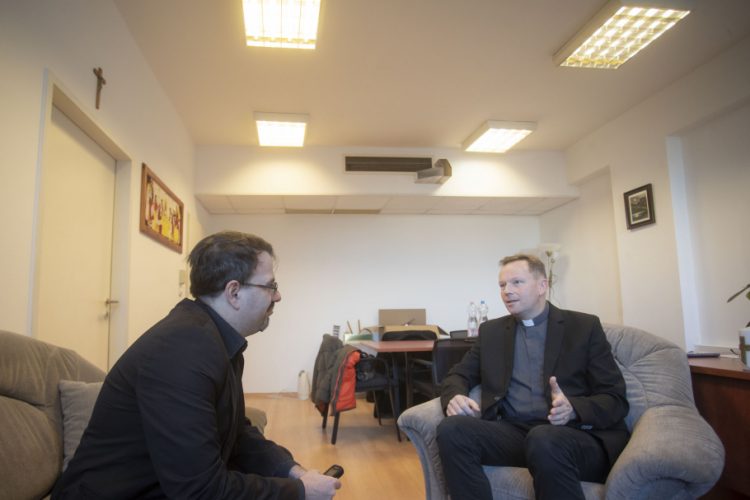
Apart from the liturgical events, what will await the pilgrims arriving in Budapest?
During the congress the Ars Sacra Festival will also take place, which offers a great number of cultural programmes for those arriving here. And I think, this is a great opportunity to introduce Hungarian culture. There will be highlighted cultural events, too. Among many others such will be the concert of the Csík-Bank in the Palace of Arts on Monday, or the concert of the choir of the Patriachate of Moscow in the Academy of Music, and on Wednesday the concert of the Budapest Gypsy Orchestra in the Erkel Theatre. So, there will be more such secular events that show different segments of our culture. And also, the Kunsthalle also offers an exhibition for anyone interested.
To what degree will the culture of the host country appear in the congress?
Similarly, to the opening ceremony of the FINA Wold Championship, where
the history of Hungary came up with our dances and songs, we also would like to add this, even in small drops and a show in the Hungexpo, maybe within the Ars Sacra Festival.
That means, we would like to show our own culture, But the way I see it, the congress has four goals: First of all, we would like to adore and glorify Christ in this week, since he is the one, who gives eternal life. Secondly, we would like to strengthen Catholics in their faith in the Eucharist. The third goal is a testimony towards the world about God’s love, who not only became man, died and resurrected, but also stayed with us in the Bread of Life. The fourth is evangelization. Pope Francis also said that we should step outside the walls, tell the others about the Good News, since the Church exists for this mission.
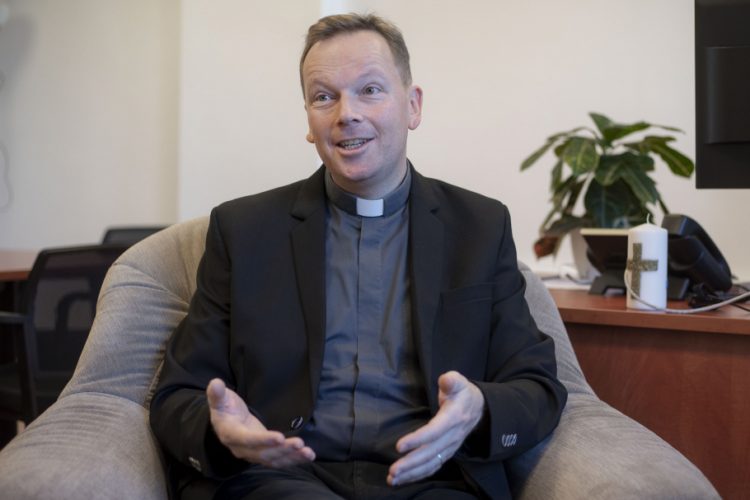
How can one reach those, who are – let’s say so – “religious in their own way”?
We invite all benevolent people to this grand and once-in-a-lifetime event. So, try to reach out to those, who do not go to church through Facebook, Instagram and other means of communication. But kindly note, that this is a Catholic event, where everyone is welcome. On our churches we often see the banner:
Meet Jesus in Budapest!
This really gives back, what the Eucharistic Congress is.
The Eucharist is Jesus Christ himself, the Congress is a meeting, and Budapest is the location.
So, this is not the end of the world, but what Jesus said: “For where two or three meet in my name, I am there among them.”
Is registration required for the events?
In the Ferenc Puskás Stadium there will be seat tickets, for the Hungexpro daily tickets, so registration is required. Besides these, for us, organisers, it is a great help if the pilgrims mark their participation at the weekend events. Expectedly, a group-registration will be enough for it, which shows how many people are coming and from where. You can register at www.iec2020.hu.
The Believers are Moving
What results do you expect, both in numbers and spiritual?
This is very difficult to measure. In numbers
we are thinking in hundreds of thousands,
mostly during the weekend masses. The experience is, that in Dublin and Cebu City approximately 10-15 thousand people participated in the morning events, but the great events attracted more attendees. In Dublin there were 85 thousand at the procession, and about 1.5-2 million in Cebu – obviously, since the Philippines is a very religious country. And in the spiritual sense I can see the fruits of the preparation already. A great number of things have started during the three years. In many parishes, the believers started to move, we can think about the School of Adoration, or that the churches were opened – there are many places, where you can stop for a prayer 27/7. Besides these, we have started the school of Evangelization, because the theme of the third preparatory year is the mission: how can we transfer the Good News to the others? The scientific congresses also helped a lot as events are well attended. We also called for a worldwide adoration; last time the faithful from 1118 locations in 54 countries joined in. Many parishes organised fantastic programmes, when welcoming the symbol of the Congress: The Mission Cross, blessed by Pope Francis. This means
that the preparations show us that it is good to pray together and to know about each other.
I think, this is the most important: strengthen each other’s faith, because if I know that I am not alone with my faith, it strengthens me. This is a starting point, which will have fruits from our strengthened faith, since we will testify our faith with more courage. The Church lives and is young!
Are the believers still afraid?
I was shocked that – obviously with the older generations – it is brand new for them, if they have to speak about their faith. This is because they grew up in an age, when it was forbidden to talk about it, and if they did, they risked jail, losing their jobs, etc.
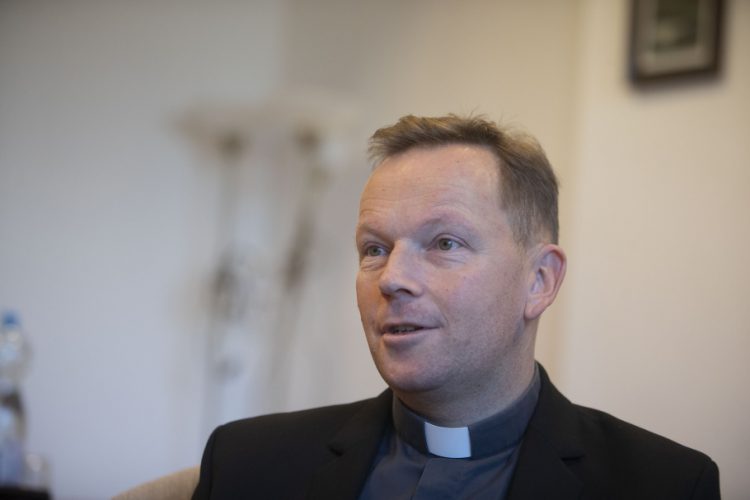
Does an event of that scale require infrastructural investments in Budapest?
The event itself – similarly to 1938 – comes with the renovation and building of churches, community houses in order to have places, where we can live our faith together. The monument churches are our common treasure, and for their preservation it is worth spending money on. Around the city there will be only temporary changes for us: and by this, I mean a podium at Heroes’ Square for a choir of 2000 people, some cordons, etc. We don’t need permanent investments.
What are the financial sources of the Congress?
Both church and state support, along with the registration fees of the participants and donations.
Vlog vs. book
Father Kornél is one of the few priests, who uses the social media actively. Where did you get the inspiration?
The idea of the Massvlog came from the experience, that many attend the mass without any liturgical training. But I see, that when I explain what happens in the mass and why – for example do we kiss the altar at the beginning or why we give a blessing at the end – many people can experience the mass in a better way. This gave me the idea, that if we have the International Eucharistic Congress coming, let’s make this public like a vlog.
And vlog is a genre, which is willingly used by many. Because you can publish it in a 300-page long book, too, but it won’t reach this many people. But they easily would watch a video, which is only a couple of minutes long.
The next part, which we will focus on is the high liturgies of the ecclesiastical year, which came from the positive feedback.
What are the reactions?
There were some, like “well, I’m an atheist, but I watched it and now I know what the mass is about”. Or when a Calvinist mentioned that if we look at the effectiveness, when I preach a couple of hundred people listen to it. But if I post a video, fifteen thousand watch it, not speaking of catechists, who can build their liturgical classes on one part. So, with time, the same invested energy can reach out to a lot more people.
So, a vlog is not for fun, it is for passing on knowledge.
And for it, it is one of the most efficient tools. But the holy mass is a community shaping occasion, where meetings happen, and this obviously cannot be replaced by the vlog.
Source: alfahir.hu
Photos: Béli Balázs




